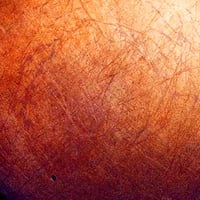Rick Steves, Always on the Go
I really enjoyed this interview with traveller and writer Rick Steves by Lulu Garcia-Navarro, which is also available as a YouTube video and podcast episode (Apple, Spotify). Here are some particularly appealing excerpts:
I love to be on a bus that’s so crowded that there’s people hanging outside the door when the bus takes off and then they settle in like cornflakes settle into a box, and there’s always room for one more body.
If you’ve never been on a bus or train like this, have you even travelled?
I just love to expose people to examples of things they would never encounter at home. Culture shock is a constructive thing. It’s the growing pains of a broadening perspective. To me, there are two kinds of travel: There’s escape travel, and there’s reality travel. I want to go home a little bit different, a little less afraid, a little more thankful, a little better citizen of the planet.
I love escape travel (my recent trip was 90% escape) but the trips I really value are the ones that change me.
Media consumption modes could also probably be sorted into escape and reality. I’ve watched/read a lot of escape/comfort/easy media over the past year and am trying to ease myself back into stuff that’s a little more challenging.
Thomas Jefferson wrote, Travel makes a person wiser if less happy. I’ve always had this hunger to be more engaged. Not necessarily more happy, but more engaged.
As someone who is often puzzled by how to answer the “are you happy?” question, I appreciate this perspective. Happiness is generally not my goal, something closer to engagement is.
Lulu, I’m in this sort of thing in my teaching where I remind people there’s three kinds of travel: You can travel as a tourist, a traveler or a pilgrim.
Ok Steve, is it two kinds of travel or three? 😉 Here’s his explanation of the three types:
Most travelers I know, they’re proud to be known as a traveler as opposed to a tourist: “I’m more thoughtful — I’m not just here to shop and get a selfie. I’m here to immerse myself in the culture and learn.” That is a traveler, to become a temporary local. A traveler learns about the world, but I think a pilgrim learns about themselves, and you learn about yourself by leaving your home and looking at it from a distance. You learn about yourself, I think, by trying to get close to God in your travels
Yeah, the pilgrim thing definitely resonates with me — “transformational travel” he calls it a paragraph later.
The most frightened people are the people who have never traveled, whose worldview is shaped by commercial news media. And the people that are not afraid are the people who have been out there and met the enemy. My most powerful travel experiences have been going places where I’m not supposed to go: Cuba, Palestine, Iran. The friendliest people, the most curious people, the people that need to meet me and I need to meet them. When they meet me, it’s tougher for their propaganda to demonize me, and when I meet them, it’s harder for my country’s propaganda to dehumanize them. It’s a powerful thing.





Stay Connected